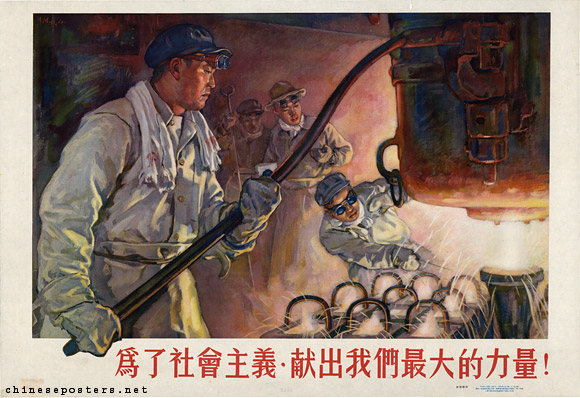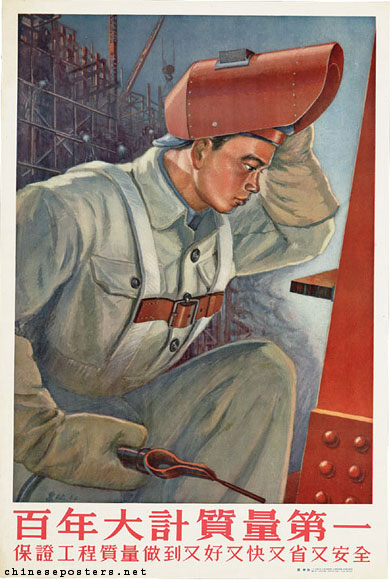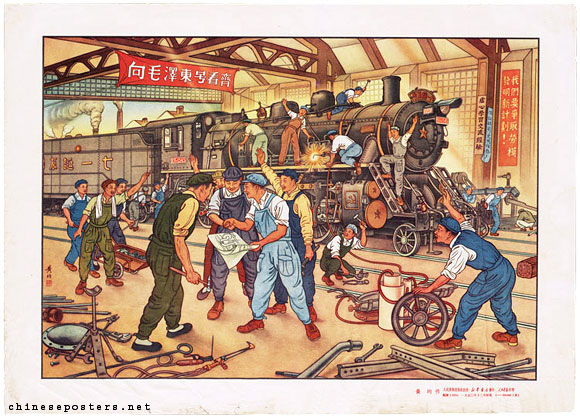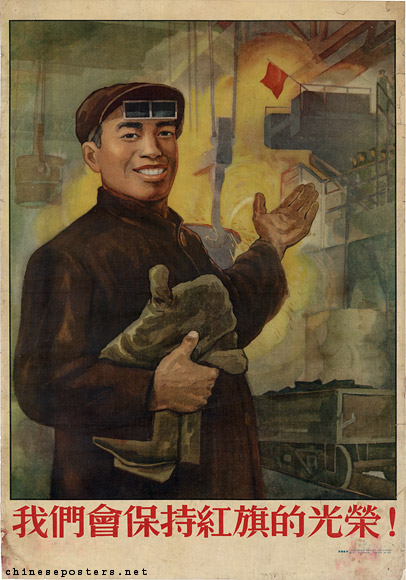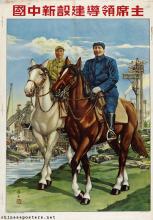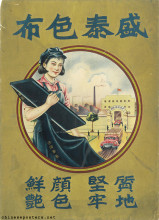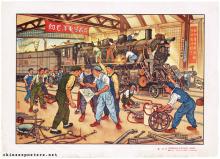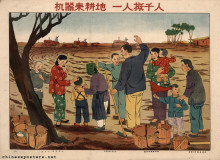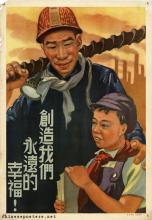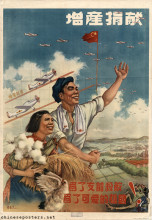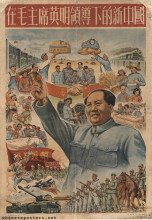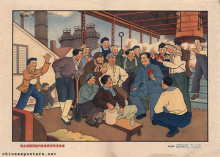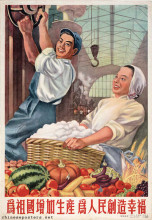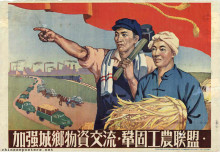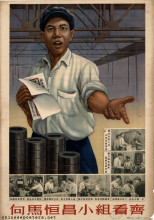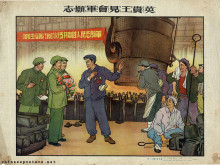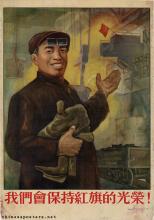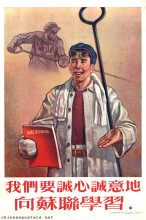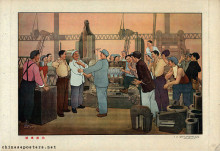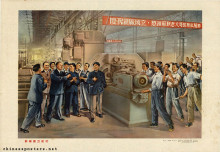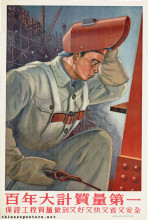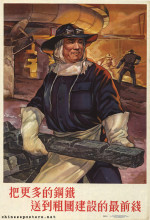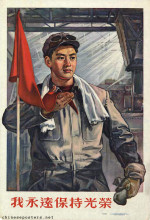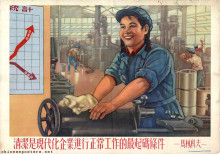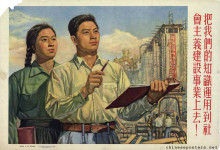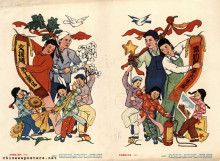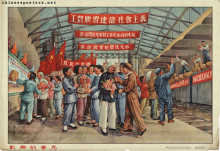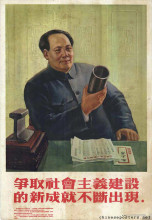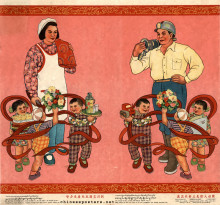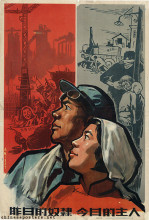The Chairman leads the building of the new China, 1950
One activity that received ample poster attention was the building up a modern and advanced state industry. In line with the developmental blueprint borrowed from the Soviet Union, steel production became one of the main yardsticks of industrial development, and aspects of this consequently featured in numerous posters. Scenes from blast furnaces, with workers in protective clothing and goggles engaging in strenuous labor in front of blazing fires to produce the steel that was needed for China's construction graced many posters.
We devote our greatest strength to socialism!, 1954
The necessity to produce more than before, if not explicitly stated in the slogan, was the obvious message. Blast furnaces and scenes from the metallurgical industry in general, seemed to inspire artists enormously, as can be seen from the numerous variations on this theme that appeared in the early 1950s. The end product of all this industrial activity, steel, appeared in artistic renditions as well, as in posters that featured workers that concentrated on more concrete aspects of construction.
A project of vital and lasting importance calls for good quality, 1953
We are proud to participate in the industrialization of the nation, 1954
Welders, both male and female, and workers in locomotive engine workshops proved excellent subjects for inspiring images, testifying not only to the vitality of Chinese industry, but to the state of the art of its products and to the labor enthusiasm of its workers as well.
Emulation in the Patriotic production campaign, 1950
Despite the stress on steel production and its applications, not all posters were limited to the activities surrounding it. Such tradesmen as construction workers, bricklayers and carpenters, in short, those people who were involved in changing the way Chinese cities looked, also were turned into subject matter. The message these images presented was twofold: first, of course, it showed hard labor changing the face of the nation, but secondly, it provided glimpses of what the new, modernized China would look like.
Marie-Claire Bergère, "China in the Wake of the Communist Revolution: Social Transformations, 1949-1966", Werner Draguhn & David S.G. Goodman (eds), China’s Communist Revolutions - Fifty Years of The People’s Republic of China (London, etc.: RoutledgeCurzon, 2002)
E. Stuart Kirby (ed.), Contemporary China 1955 (London: Oxford University Press, 1956)

